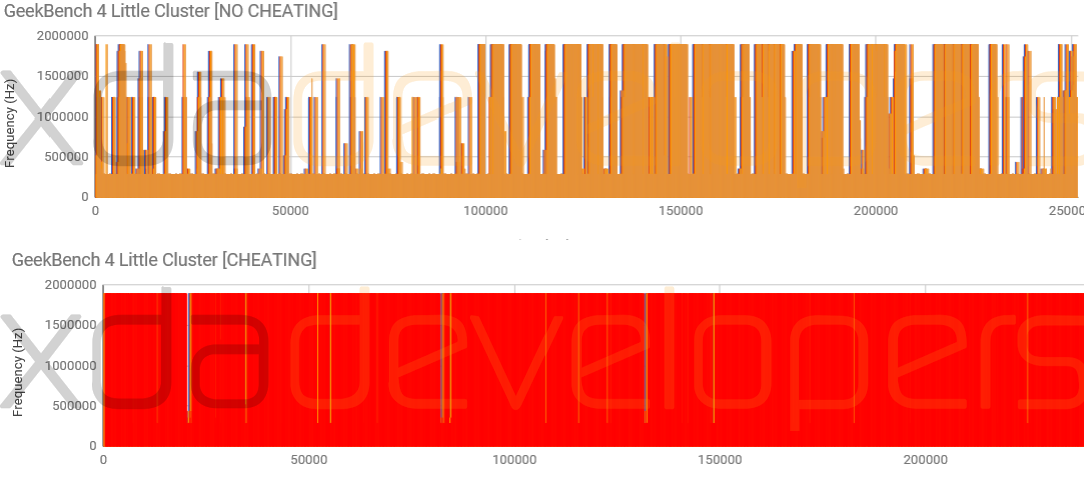

However, it's mentioned that the behaviour is barely noticeable in day-to-day use as OnePlus has technologies like OS framework boosters and touch boosters to neutralize the performance-limiting mechanism. It appears that OnePlus has a list of blacklisted apps and most of them are popular among smartphone users, including Chrome, Twitter, Zoom, WhatsApp, Facebook, Instagram, Snapchat, YouTube, Discord and more. Going on to the vanilla OnePlus 9, he also noticed the same issue as the device only scores a 20.955 in JetStream 2 compared to the ZenFone 8’s 97.346 in the same test.įurther digging into the devices' settings, he spotted a OnePlus Performance Service that decides whether to make modifications to the CPU scheduler when users open certain apps. By using standard browser benchmarks such as Speedometer 2.0 and JetStream 2.0, the device scored a relatively low score and it's even on par with budget devices released years ago.
Oneplus benchmarks deleted from geekbench pro#
Aside from Intel's new 8th and 9th-generation Coffee Lake chips, Radeon Pro Vega graphics options, and faster RAM, there have been no other improvements to the 2019 iMac models.Andrei Frumusanu from AnandTech has observed some odd behaviour while running the performance benchmarks on the OnePlus 9 Pro. Poole says that while there's a significant boost when it comes to multi-core performance in the new iMacs, along with a decent boost in single-core performance, the increase isn't enough to "justify upgrading from a 2017 iMac."Īpple's newest iMac models were announced last week and have been arriving to customers this week. Single-core performance is up 5 to 10 percent, while multi-core performance has increased by 10 to 50 percent.Īs Poole points out, the performance gains in the 2019 iMac models are due to higher frequencies and core counts as the underlying architecture hasn't been updated. Gains are more modest for the 21.5-inch 4K iMac models, but still significant. The high-end 8-core iMac offers 16 percent higher single core performance and just 10 percent lower multi-core performance than the 10-core iMac Pro. These chips are two years apart, so it is no surprise that even the mid-level chips are outperforming the higher-end chips from 2017.Ħ-core and 8-core chips in the 27-inch models are now competitive with the 2017 iMac Pro models with 8 and 10-cores. The highest-end iMac earned a single-core score of 6157 and a multi-core score of 32293, compared to the 5864/1971 single and multi-core scores of the equivalent high-end machine.Įven the base model 2019 27-inch iMac with a 3.0GHz 6-core 8th-gen chip saw notable gains, earning a single-core score of 5222 and a multi-core score of 20145, compared to the 4767/13682 scores the low-end 2017 models earned.

The higher-end models with 3.6GHz 8-core Core i9 chip offer the biggest boost in multi-core performance, with speeds up 66 percent.
Oneplus benchmarks deleted from geekbench series#
Geekbench's John Poole this afternoon shared a series of 2019 iMac benchmarks, giving us a look at the performance boosts offered by Intel's 8th and 9th-generation Coffee Lake chips.Īll of the new 27-inch 5K models offer superior performance compared to their 2017 counterparts, with single-core performance up an average of 6 to 11 percent and multi-core performance up 43 to 49 percent for six-core models.


 0 kommentar(er)
0 kommentar(er)
